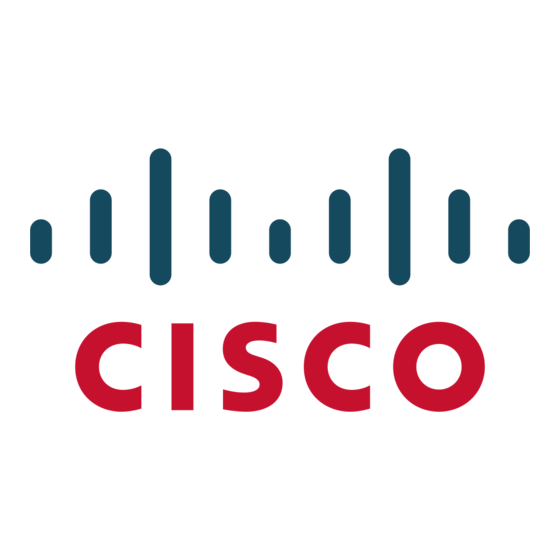Cisco Expressway CE1000 Appliance Manual de instalación - Página 7
Navegue en línea o descargue pdf Manual de instalación para Pasarela Cisco Expressway CE1000 Appliance. Cisco Expressway CE1000 Appliance 16 páginas. X8.2 or later

Configuring
Configuring
Before you can use the Cisco Expressway, you must configure its IPv4 and/or IPv6 address, subnet mask
and default gateway. Consult your network administrator for information on which addresses to use. Note
that the Cisco Expressway must use a static IP address.
This section describes how to connect to the Cisco Expressway and perform the initial configuration.
Connecting to the Cisco Expressway
Before you can use the Cisco Expressway, you must configure its IPv4 and/or IPv6 address, subnet mask
and default gateway. Consult your network administrator for information on which addresses to use. Note
that the Cisco Expressway must use a static IP address.
Note: an additional IP address is required if the CIMC (Cisco Integrated Management Controller) tool is used.
It can be a static IP address or assigned via DHCP.
This initial configuration can be done:
by connecting from a PC to the Cisco Expressway using a serial cable (see
n
[p.8]
followed by
Configuring the Cisco Expressway
by connecting a monitor and keyboard directly into the unit (see
n
by
Configuring the Cisco Expressway
if your network is set up to allow it, by connecting using a web browser to the default IP address of
n
192.168.0.100 (see
Using the web interface
Figure 1: Rear panel showing ports.
The rear panel ports are:
1 VGA port
2 Serial port
3 Dedicated management port (can be used for CIMC in the
future)
4 LAN 1 (left-hand SFP port)
5 LAN 2 (right-hand SFP port)
Cisco Expressway CE1000 Appliance Installation Guide (8.5)
[p.9]).
[p.9]).
[p.10]).
Connecting via the serial port
Connecting via the KVM port [p.9]
followed
Page 7 of 16
